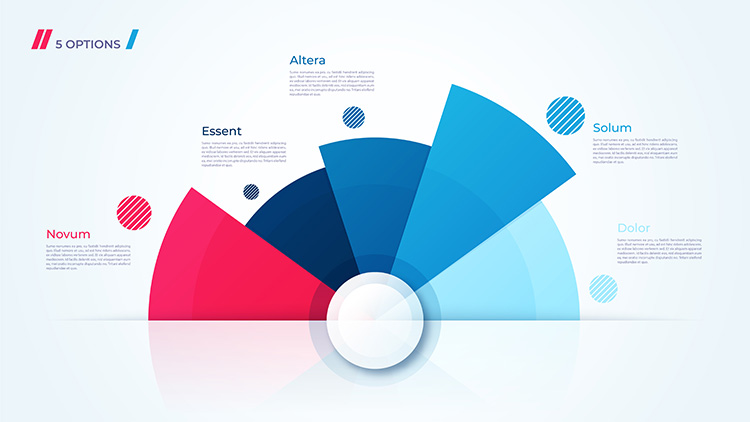AI & ML DevelopmentAbout this Services
Improve Machine Learning algorithms by studying underfitting, overfitting, training, validation, n-fold cross validation, testing, and how hyperparameters could improve performance. Perform linear and logistic regressions in Python.
1. 3D Printing Services
1.1 Prototyping
- Rapid prototyping for product design validation and functional testing.
- Creation of both low-fidelity and high-fidelity prototypes based on customer specifications.
1.2 Custom 3D Printing
- On-demand 3D printing of parts and products for industries like healthcare, automotive, and consumer goods.
- Customization of prints based on user-submitted CAD files or in-house designs.
1.3 Low-Volume Production
- Small batch manufacturing for low-volume production runs using 3D printing technology.
- Ideal for limited-edition products, custom tools, and spare parts.
1.4 3D Scanning and Printing
- Reverse engineering through 3D scanning of physical objects and replication using 3D printing techniques.
1.5 Architectural Models
- High-detail models for architectural visualizations, including scale models of buildings, landscapes, and urban environments.
1.6 Models and Devices
- Creation of anatomical models for education, training, and surgery preparation.
- Custom medical devices and orthotics based on patient data.
1.7 Jewelry and Art Production
- High-precision 3D printing for custom jewelry, fine art, and decorative pieces.
1.8 Education and Training
- 3D printing services for educational institutions for research, student projects, and workshops.
2. 3D Printing Techniques
2.1 Fused Deposition Modeling (FDM)
- Popular and affordable 3D printing technique for producing functional parts using thermoplastic materials like PLA, ABS, and PETG.
2.2 Stereolithography (SLA)
- High-resolution printing technique using liquid resin and UV lasers to create detailed and smooth surface finishes.
- Ideal for intricate models, prototypes, and jewelry.
2.3 Selective Laser Sintering (SLS)
- Powder-based 3D printing technology using lasers to fuse small particles of polymer, metal, or ceramic powders.
- Suitable for durable, functional prototypes and small production runs.
2.4 Digital Light Processing (DLP)
- Similar to SLA but uses a digital projector screen to flash entire layers at once, offering high-speed and precision printing.
2.5 Multi Jet Fusion (MJF)
- Advanced powder-based 3D printing process used for industrial-grade parts and high-quality prototypes with fine detail and mechanical strength.
2.6 Direct Metal Laser Sintering (DMLS)
- Metal 3D printing technique used to create parts directly from metal powders, ideal for aerospace, automotive, and medical implants.
2.7 Binder Jetting
- A method where a liquid binder is selectively deposited to join powder materials, enabling full-color and multi-material printing.
2.8 PolyJet
- Multi-material 3D printing technology that combines photopolymers and UV light, enabling full-color printing and soft-touch textures.
2.9 Electron Beam Melting (EBM)
- Metal 3D printing technique using electron beams to melt and fuse metal powders for high-performance parts, commonly used in aerospace.
2.10 Laminated Object Manufacturing (LOM)
- A 3D printing technique that bonds layers of material (paper, plastic, or metal) with adhesive and uses a laser to cut them into shape.
3. 3D Printing Tools and Equipment
3.1 3D Printers
- Desktop 3D Printers: Compact and affordable FDM or SLA printers for personal or small business use.
- Industrial 3D Printers: Large-scale printers capable of handling high-performance materials and large parts.
- Metal 3D Printers: Specialized machines for direct metal printing using technologies like DMLS or EBM.
3.2 3D Scanners
- Handheld 3D Scanners: Portable devices used to capture the 3D geometry of physical objects for reverse engineering or replication.
- Desktop 3D Scanners: Stationary devices for scanning smaller objects with high precision and detail.
3.3 Finishing Tools
- Sanding, painting, and polishing tools for post-processing of 3D printed parts to achieve smooth finishes and desired aesthetics.
3.4 Laser Cutters
- Machines used in combination with 3D printing to cut and engrave designs into materials like wood, metal, and acrylic.
4. 3D Printing Software
4.1 CAD (Computer-Aided Design) Software
- AutoCAD: Industry-standard software for 3D modeling and design.
- SolidWorks: Professional-grade CAD software for designing complex mechanical parts.
- Fusion 360: Cloud-based 3D modeling and design software for engineers and product designers.
- TinkerCAD: Easy-to-use, browser-based CAD software for beginners and educational purposes.
4.2 Slicing Software
- Ultimaker Cura: Open-source slicing software that converts 3D models into instructions for 3D printers.
- PrusaSlicer: Advanced slicing software tailored for Prusa printers but compatible with other FDM printers.
- PreForm: Software used for preparing files for SLA printers, specifically for Formlabs printers.
- Simplify3D: Premium slicing software known for its precision, control, and optimization options.
4.3 Simulation Software
- Ansys: Engineering simulation software used to validate and optimize 3D printed parts for structural integrity and performance.
- Autodesk Netfabb: Software for optimizing 3D printing workflows and running simulations to ensure print accuracy.
5. Technologies Used in 3D Printing
5.1 Additive Manufacturing
- The core technology behind 3D printing, where objects are built by adding material layer by layer.
5.2 Generative Design
- An AI-driven design process where software generates optimized designs based on constraints and performance criteria, commonly used in conjunction with 3D printing.
5.3 Topology Optimization
- Technology used to optimize the layout of material within a given space for maximum strength and efficiency, frequently applied in 3D printed parts.
5.4 Bioprinting
- Advanced 3D printing technology that prints biological materials and cells to create tissues, organs, or medical implants.
5.5 Hybrid Manufacturing
- Combines traditional manufacturing techniques (like CNC machining) with 3D printing to create parts with complex geometries and high precision.
6. Types of 3D Prints
6.1 Functional Prototypes
- 3D prints designed for functional testing, performance analysis, and iteration during product development.
6.2 End-Use Parts
- Final, production-quality parts created using durable materials and advanced 3D printing technologies such as SLS, DMLS, and MJF.
6.3 Architectural Models
- Detailed 3D-printed models for showcasing building designs and urban planning concepts in architectural projects.
6.4 Artistic and Decorative Pieces
- Custom 3D-printed sculptures, art pieces, jewelry, and decorative items tailored to individual specifications.
6.5 Medical Models
- 3D-printed anatomical models used for surgery planning, medical training, and custom prosthetics.
6.6 Educational Models
- 3D-printed objects used in classrooms for teaching complex concepts in subjects like biology, engineering, and architecture.
6.7 Miniatures and Figurines
- Highly detailed 3D-printed miniatures for board games, toys, and collectors.
6.8 Automotive Parts
- 3D-printed parts for automotive prototyping, custom car components, and spare parts for vintage or hard-to-source vehicles.
7. Materials Used in 3D Printing
7.1 Plastics and Polymers
- PLA (Polylactic Acid): A biodegradable thermoplastic used in FDM printing, known for ease of use.
- ABS (Acrylonitrile Butadiene Styrene): A strong, impact-resistant plastic used for durable prototypes and end-use parts.
- PETG (Polyethylene Terephthalate Glycol): A durable, flexible material used for food-safe and high-impact applications.
7.2 Resins
- Standard Resins: Used in SLA and DLP printing for high-detail prototypes with smooth finishes.
- Tough Resins: Durable resins designed for functional testing and end-use parts.
- Dental Resins: Specially formulated for medical and dental applications like orthodontics and surgery guides.
7.3 Metals
- Stainless Steel: Metal powder used in DMLS for strong, corrosion-resistant parts.
- Titanium: Lightweight and strong metal for aerospace, medical, and industrial applications.
- Aluminum: Used for lightweight metal parts requiring high thermal conductivity.
7.4 Composite Materials
- Carbon Fiber Reinforced Filament: Lightweight, strong material used for high-performance applications.
- Wood Filament: PLA-based filament infused with wood fibers for decorative and artistic prints.
It is a long established fact that a reader will be distracted by the readable content of a page when looking at its layout. The point of using Lorem Ipsum is that it has a more-or-less normal distribution of letters, as opposed to using ‘Content here, content here’, making it look like readable English. Latin words, combined with a handful of model sentence structures, to generate Lorem Ipsum which looks reasonable.
Application Areas
Technologies That We Use
- JavaScript
- Python
- Java
- C/CPP
- PHP
- Swift
- C# (C- Sharp)
- Ruby
- SQL


